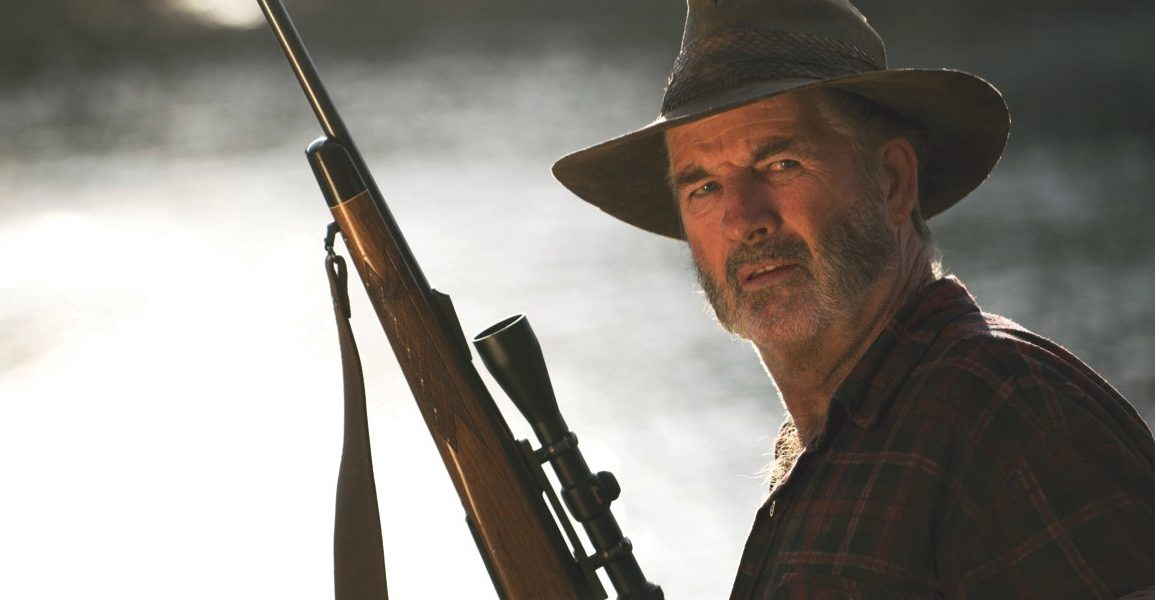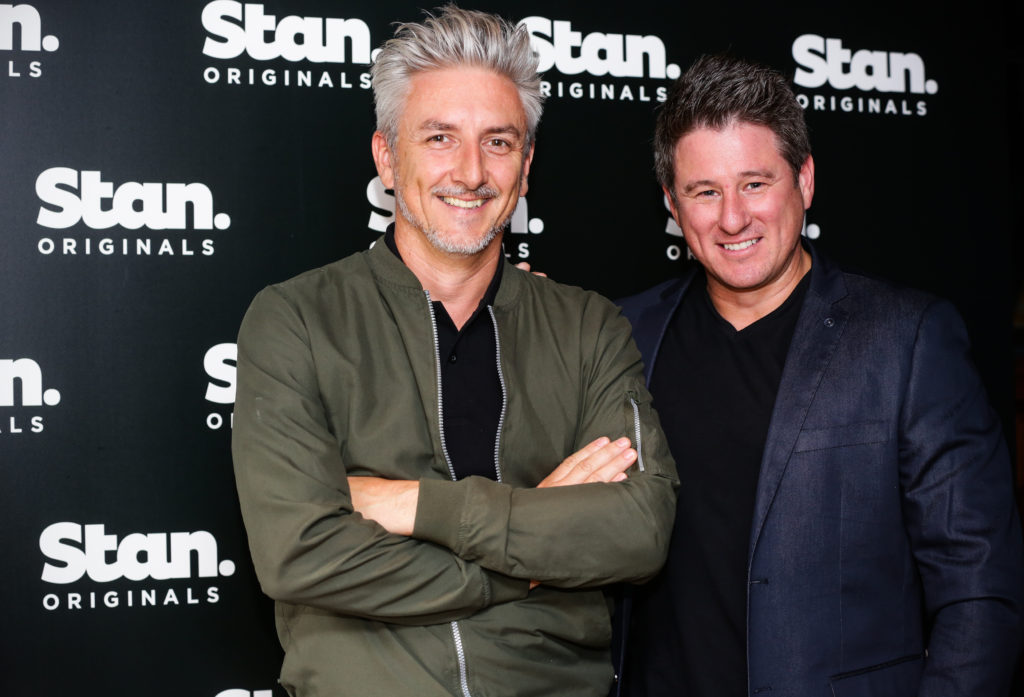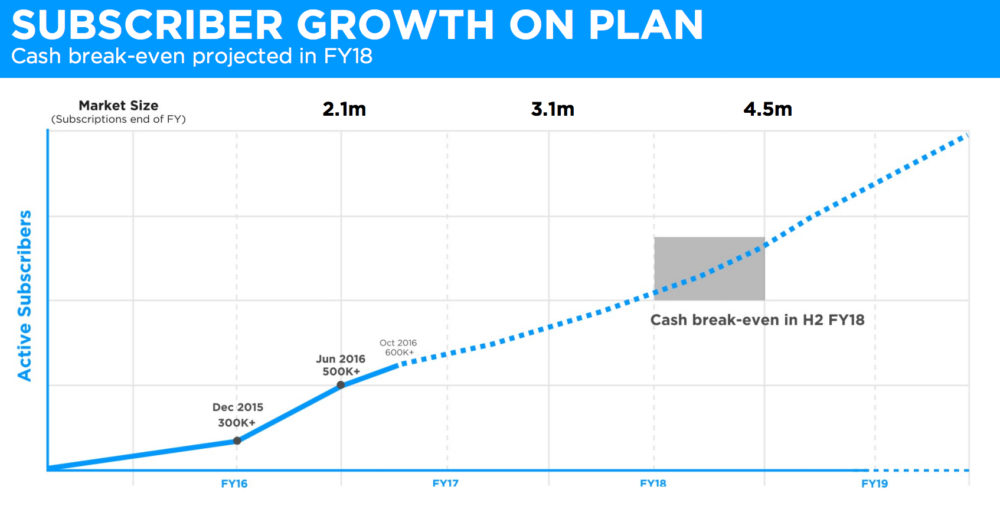One of the major challenges facing any broadcaster – free-to-air, subscription or SVOD – is the split of its funds for content between licensed content and originals.
Mike Sneesby, chief executive officer of Stan, told Mediaweek its mix of funds between the two hasn’t changed much in the two years since launch. “With our growing content offering, everything has grown proportionally.”
Sneesby was speaking to us shortly after a content showcase in Sydney to highlight some of their forthcoming arrivals.
Stan is proud that it can boast both some of the biggest budget television shows in the world via its Showtime deal, yet also commission big budget original TV, as in Screentime’s Wolf Creek.
“As Netflix and Amazon spend less and less on licensed content by making their own originals, Hollywood studios are more and more coming direct to Stan.
“If you look at the number of our first-run exclusive shows versus any other player in the market, the vast majority in the streaming space are coming to us.” What Sneesby explained was that with other players relying on originals, it gives Stan a bigger content choice from around the world. “Our positioning is we are the home of Showtime, with more of the bigger shows from the Hollywood studios coupled with our local original productions.”
As to why Stan doesn’t invest more of its content spend on originals like Netflix and Amazon, Sneesby said: “We may choose to spend a little bit more. However, the reality is Australians have a unique taste in content. They love some shows that may not work as well in international markets. What we look for in Stan originals is something that is uniquely Australian. We want people to think we are making things they will never see anywhere else.
“Australians also have interest in big international franchises. If we skew too much to originals we won’t be catering to the breadth of audience. We currently have a great mix.”
Although Stan leaves the major business updates to its owners Fairfax Media and Nine Ent Co when they report their first half results soon, Sneesby did tell Mediaweek: “The last official update we gave late in 2016 told the market we had passed 600,000 active subscribers. Back then we also shared a forecast of our subscriber signup run rate. It was a dotted line and a very steep dotted line. Some questioned if we could get that growth across the summer. The good news is that we exceeded it. We had a record summer…it was a monster December and a monster January and February is off to a great start.”
The active subscriber number is people with a current paid or trial subscription. “The vast majority are paying subscribers and we convert 75% of trial subscriptions into paid.”
As to linking subscriber growth to particular pieces of content, Sneesby is reluctant to reveal too much. “We have a lot of data from our users to get a read on who our subscribers are today and who we should be targeting in terms of future subscribers who are ready to pick up the service.”
He did admit Sherlock was a big premiere for them. “In the lead-up to that, we had already had a very successful December. Sherlock was three episodes that dropped from the first week of January and it drove massive take-up throughout the month.” This was the second January in a row that Stan had built audiences off the back of a new Sherlock series.
When Stan first launched, the company estimated the total potential market for an SVOD subscription in Australia could be about 5m. Just last October Stan had revised that potential market to eventually grow to 8m.
New content
One Night Stan is coming to the platform on March 24. The stand-up comedy specials will be featured one a week after they were recorded late last year and early this year at the aptly named Comedy Theatre in Melbourne. One of the specials features Wil Anderson and he joined the media event last week with a short set ahead of his new Critically Wil Australian tour.
All the talent was supplied by Kevin Whyte’s Token Artists, which manages the talent, and whose production company packaged the specials for Stan.
Stan also confirmed for the first time a second season of Wolf Creek from Screentime. “John Jarrett will be back as Mick Taylor,” said Sneesby. “This won’t be a continuation of the story from season one, but will be a stand-alone story about Mick Taylor. We are giving creator Greg McLean the freedom to explore the boundaries and to do something that is exciting and continues to reinvigorate the franchise. That is in pre-production and will screen later this year.”
Sneesby is reluctant to pick out any single program as driving big numbers. “The Stan originals on the whole have created a halo effect for the brand, creating strong brand awareness. Getting something like Wolf Creek, which is a massive brand in its own right, helps our brand get bigger and bigger.
“The first Wolf Creek TV series really put us on the map as a business that is serious and here to stay.
“The international distribution deals picking up the show include life of series commitment. Part of the reason we can make big budget programs is we have now got a commitment for dollars for season two.”
4K
“We always set ourselves to be launching 4K early in 2017. The take-up of 4K devices had to be there and we have seen 4K becoming much more mainstream. For us the timing is right. We are still early in the cycle of adoption, but it is at the right point for us to enter it.
“There is no other Australian streaming service doing anything similar, whether it be FTA catch-up services or Foxtel.”
Sneesby noted not everything is being made in 4K, but much is, including Stan’s Australian originals. “For Breaking Bad fans this is the first time the series has been available in 4K in Australia, and similarly for Better Call Saul.”
Offline viewing
“It is all about getting the rights,” said Sneesby. “Most people assume it is a technology challenge for us, but we need to be able to secure the rights. As we do with 4K too.
“For the past 18 months we have been securing offline rights as part of updates to deals to get to the point where we can launch with the vast majority of our catalogue being available for downloads. That world of rights has evolved quite quickly.”
Sneesby also explained for us how long those programs will live after being downloaded. “It does come with limitations to protect the rights of the licence holder. For us that means a downloaded show will remain on a device for 30 days. However, once a consumer starts watching it, the file will only be accessible for 48 hours.”


